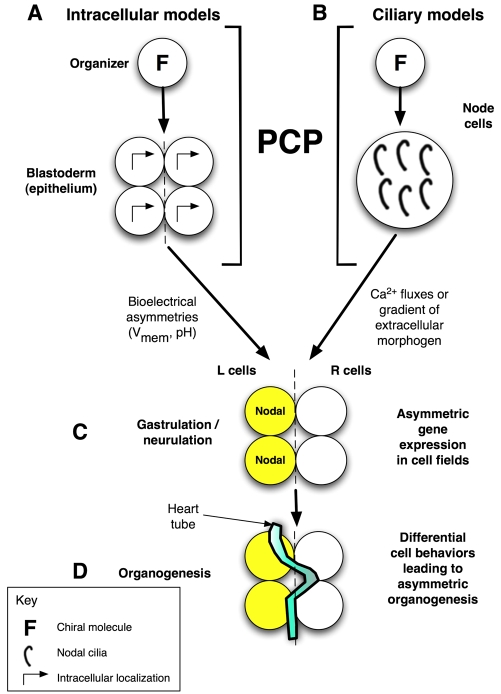Fig. 1.
Overview of LR patterning phases and proposed role for PCP. Consistent LR asymmetry includes sequential phases of symmetry breaking (providing cells with a consistent orientation along the LR axis), asymmetric gene expression, and organogenesis. (A) In our model, the initial orientation occurs via a cytoskeletal structure (F) in very early blastomeres that we term the LR `organizer'. This involves the coordination of the apical-basal, LR and dorsoventral (DV) axes and is imposed across the embryonic epithelial field by a PCP mechanism (Aw et al., 2008). (B) An alternative cilia-based model is also compatible with this hypothesis as PCP is required to orient the cilia, the chiral flow of which has been proposed to initiate asymmetry (Brueckner, 2001). In the intracellular model (A), the directional information is converted to LR position relative to the midline by the establishment of physiological asymmetries in membrane voltage (Vmem) that redistribute intracellular LR morphogens (Fukumoto et al., 2005). In the ciliary models (B), LR position is dictated to cells by the redistribution of an extracellular signal (e.g. Ca2+). In both models, these steps are followed by (C) cascades of asymmetric gene expression that (D) drive organogenesis. L, left; R, right.

